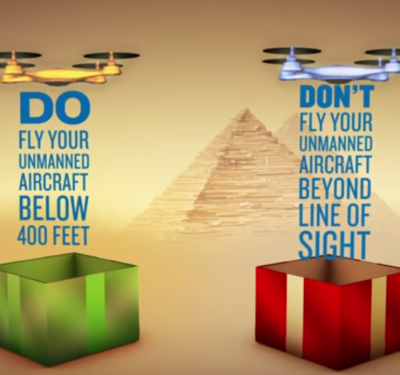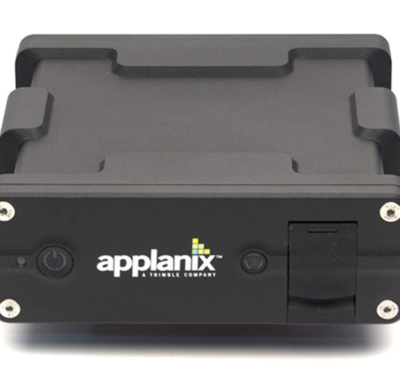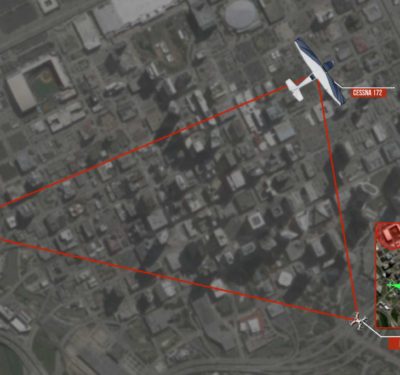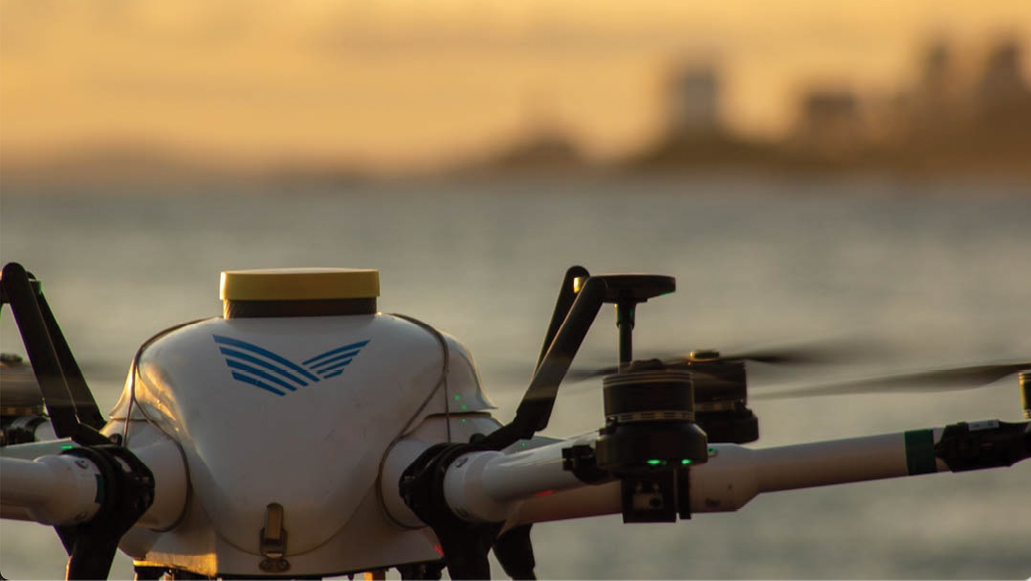
A lack of transportation infrastructure, complex topography and the desire for rapid delivery of goods has spurred a drone delivery revolution in Latin America.
As the proverb says, “Necessity is the mother of invention.” In the case of drone delivery in Latin America (Central and South America, Mexico, and the Caribbean), nothing could be more accurate.
A general lack of transportation infrastructure, extremely complex topography, a diverse region with urban clutter and sprawling rural outposts, combined with the need and desire for delivery of a wide range of on-demand goods, has spurred a drone delivery revolution in LATAM. Three companies at the forefront of this revolution—Speedbird Aero, Aerialoop and ORKID—use different delivery models, design their own unique drones and continue working through the various civil aviation authorities. What began as a localized effort continues spreading across Latin America, and the globe.
CHALLENGES BECOME OPPORTUNITIES
According to the World Bank, Latin America’s limited resources has resulted in a distinct disadvantage in terms of physical infrastructure development. While each country’s investments into infrastructure varies, the region invests, on average, only 3% of its gross domestic product into these critical needs.
From these challenges, a food delivery revolution, fueled by the rise of food delivery apps, has taken place over the past decade. In 2015, the Colombian startup Rappi arrived on the scene. In just three years, it hit a $1 billion valuation. By 2019, it reached $3.5 billion. Around the same time, several other big players made their mark, including iFood and PerdidosYa.
Companies hired independent delivery drivers, mostly motorcycle riders, to deliver their goods across these crowded city streets and treacherous, remote dirt roads. Motorcycles cut delivery times in half (30 minutes versus an hour), but motorcycles are dangerous.
As with so many other use cases involving dull, dirty and dangerous jobs, drones surfaced as an answer to the call for a safe, efficient and effective means to deliver a wide variety of goods in Latin America.

SPEEDBIRD AERO DRIVES FIRSTS
Sao Paulo, Brazil, remains South America’s largest urban area with 20.4 million people and boasts a rich aviation heritage. One of only six countries in the world that manufactures commercial jets, Brazil is home to the well-known OEM, Embraer. In the past few years, drones have emerged as a robust part of Brazil’s otherwise strong commercial aviation market. Drone delivery and logistics has risen to the top of dominant market use cases, in large part, due to the efforts of startup Speedbird Aero.
Speedbird Aero’s cofounders Samuel Salomao, a software engineer, and Manoel Coelho, MBA, created the company in 2018. In just five years, it has produced three different airframes that have successfully flown over 10,000 drone delivery missions.
Speedbird Aero designed its first drone, the DLV-1, a lightweight, six-rotor vehicle, to carry up to 6.6 pounds of payload. This drone received a ground-breaking drone type certification from Brazil’s National Civil Aviation Agency (Agência Nacional de Aviação Civil or ANAC), a first throughout all of Latin America.
The company’s DLV-2, a heavier cargo lift six-rotor drone, can carry almost triple the weight and fly three times the range of the DLV-1. ANAC certified the DLV-2 as well, and also granted Speedbird Aero approvals for the country’s first BVLOS operations, including operations at night, using these two aircraft.
Speedbird’s DLV-4, an 11-pound, fixed wing electric vertical takeoff and landing platform, can fly medium range distances, up to 62 miles. The company expects ANAC certification for this drone in 2024.
From a command and control perspective, all Speedbird’s drones fly remotely using Elsight’s Halo connectivity backbone. This enables the company to reliably control drones from its Sao Paulo command center in locations around the world.
This hardware and software combination led to early wins on the commercial side. One of Speedbird Aero’s initial partnerships involved deliveries for iFood, the largest food delivery company in Latin America, with an average of 70 million deliveries per month. Initial trials from two food hubs across customers throughout two municipalities provided a huge return on investment. The DLV-1 could fly a 1.7-mile route in only 5 minutes and 20 seconds, compared to the roughly 35-55 minutes ground transportation took for the same delivery.
In its first year, Speedbird Aero flew more than 4,000 deliveries. Almost a fourth of these involved urban BVLOS flights. Based on these initial successes, ANAC granted Speedbird Aero yet another first authorization in Brazil to deliver loads for iFood of up to 5.5 pounds within a 1.9-mile radius, both day and night.
Local clients started lining up after this, including the country’s largest medical laboratory with 8,000 collection points, Lab Pardini-Fleury; the Brazilian arm of Anheuser-Busch InBev, called Ambev; Claro telecoms; Natura body care; the Agroceres pig farming conglomerate; and BRF, one of the largest global food companies with a presence in over 117 countries. This year alone, Speedbird has successfully flown about 3,500 BVLOS deliveries in urban areas.
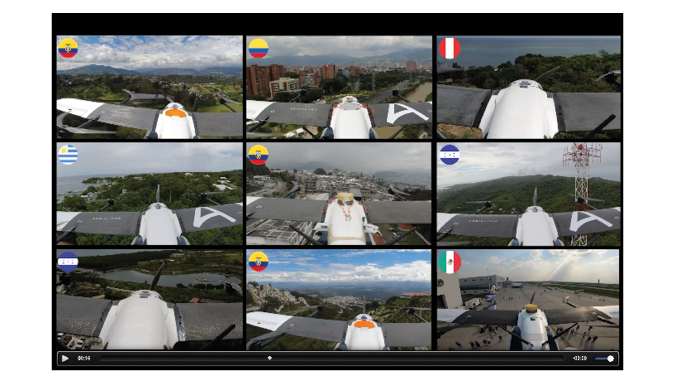
AUTONOMOUS HUBS IN ECUADOR
Ecuador straddles the equator on South America’s west coast. Its diverse landscape encompasses the Amazon jungle, Andean highlands and Galápagos Islands. The country also accounts for the sixth-largest aviation market in South America. Within this landscape, drones have become increasingly popular. Of the various use cases, drone delivery and logistics has risen to the top of the list. Ecuador aims to become a leader in this arena. Aerialoop Corp., a Quito-based operating company that started in general aviation, hopes to propel it there.
CEO Pedro Meneses founded the company. Meneses gathered the best-of-the-best in hardware and software developers to form Aerialoop three years ago, with the goal of middle-mile domination. His team, with over 50 years combined drone development experience, includes Simon Wilks, the product owner for software (a former Google Europe manager); CTO Andreas Antener (Swiss PX4 VTOL code developer), Jose Barzallo, vice president of operations (part of the original Galapagos team) and COO Santiago Barrera (former vice president of operations for Virgin Galactic).
Not surprisingly, the company designs, develops and flies its own drones. Its six-rotor ALT6-8 VTOL has a patent-pending motor configuration allowing for quadruple redundancy while also providing the highest payload to weight ratio of its class. With a takeoff weight of 55 pounds, it can carry payloads up to almost 18 pounds with a payload volume of over 17,000 cubic inches. This allows for payload consolidation, meaning several packages per trip. And the drone is fast. It can take off vertically from a four-by-four meter area and transition for forward flight of 62 miles per hour at distances greater than 62 miles. Built for versatility and resilience, it is waterproof and high wind tolerant. Perhaps most
important, it is highly automated.
The Aerialoop team took no chances and put the ALT6-8 through more than 10,000 flight hours of testing before deploying it initially in Quito, using a novel automated and networked delivery approach.
In only 12 months, Aerialoop proved it could safely fly 300 flights per week at each of its locations. The Ecuadorian Dirección General de Aviación Civil (DGAC) initially only permitted the company to fly a single route. According to Meneses, his team discovered through trial and error that shifting from single routes to networks creates the most efficient and effective operational model. To do this, they use multiple aerial corridors, or loops. After demonstrating minimal ground risk using Airspace Link’s AirHub system, the DGAC granted the company with permanent commercial permits for six hubs covering 16 routes. The process took three years.
“The economics are simple,” Meneses said. “You need both reach [hubs spread throughout cities] and volume [connecting high-density urban areas], to create the desired consolidation of orders per flight powered by full automation, to reduce cost, per order.”
Aerialoop has partnered with Rappi, ABinBev, Hospital de los Valles, Fast Farma and Servientrega, which alone delivers more than 57 million packages across Latin America annually, including 60,000 packages daily in Quito.
As of today, Aerialoop has racked up tens of thousands of urban flights and has mapped more than 1,000 loops in the region. Now, one of its ALT6-8 VTOLs takes off for deliveries every seven minutes. This year, Aerialoop plans to reach the milestone of 1,000 flights a day in Quito by consolidating even more drones on the same network.

COLOMBIA BREAK OUT
Colombia, the fifth-largest country in Latin America, bursts with the largest population in South America. Another strong aviation-focused country, it contributes more than $7.5B in GDP toward aviation. As drones increasingly become a part of the commercial aviation sector there, one company, ORKID, plans to lead the charge.
Cofounded in Colombia by three local deep tech entrepreneurs, Santiago Pinzon (CEO), Diego Pinzon (COO) and Andres Uribe (CTO), ORKID is a niche business-to-business company that offers last-mile drone delivery technology and services to large enterprises. The company has crafted its delivery model around fully automated point-to-point operations involving static landing sites and large fulfillment centers.
According to Pinzon, “We strongly believe that logistics will be automated. It’s just a matter of time. Last mile drone delivery will bring extreme benefits to emerging markets.”
To do this, the ORKID team designed the ORKID 260 VTOL drone. With a maximum takeoff weight of 35 pounds and a eight-foot wingspan, the ORKID 260 can carry up to 6.6 pounds, flying at cruising speeds up to 50 miles per hour for distances up to 50 miles.
The company’s own cloud based C2 software and avionics manage and control its drones and enable the type of strategic route planning, obstacle avoidance and
automation required for autonomous BVLOS operations. The software also facilitates remote one-to-many ops. One operator can control and monitor up to 10 drones.
To take advantage of the more advanced regulatory scheme in Brazil, ORKID recently opened a headquarters in Sao Paulo, in addition to its original location in Bogota. The move paid off. In January, ANAC bestowed upon the ORKID 260 an experimental airworthiness certificate for a VTOL drone. The company has flown over 3,000 miles autonomously as it remains undergoing certification for pursuing its design authorization (type certificate) in Brazil. The company expects approvals in the third quarter.
On the Colombian front, the ORKID team expects to apply for delivery approvals after the civil aviation authority publishes a much-anticipated regulation to enable BVLOS drone deliveries sometime this fall.
As ORKID continues successfully pursuing these regulatory approvals, it continues lining up some big clients. In Colombia and Brazil, it has signed four contracts for drone deployment operations as well as nine memoranda of understanding with pharma, third-party logistics medical services, e-commerce and general logistics companies.
BIG MOVES ABROAD
All three companies have expanded beyond their original country borders. ORKID has already signed letters of intent with two international partners for operations in five countries.
Speedbird now operates and serves multiple customers not only in Brazil, but in Israel and the United Kingdom, where it received experimental certifications from both countries for its drone, as well as in Scotland, other parts of Latin America and the U.S. It has started expanding its Latin American partnerships across eight countries: Argentina, Peru, Chile, Panama, Costa Rica, Mexico, Colombia and the Dominican Republic.
The company also has its sights on a robust U.S. presence. One of its highlights from last year involved participating in the first U.S. urban air mobility simulation with EVE Air Mobility (an Embraer company) and Spright. Earlier this year, CEO Coelho planted roots in Florida, with the goal of opening an U.S.-based headquarters and assembly plant.
Coelho attributes the company’s success to this excellent team and their laser-focus on getting things done. “We have been forced to be very pragmatic about our business strategy. Even before the more global venture capital crisis, funding has been very limited and expansive in Latin America. We have to actually do things that worked and provided a return to our clients and the company. Everywhere we fly, we have only one shot to get it right. And so, we keep on flying…and delivering.”
For its part, Aerialoop has designed the 110-pound payload ALT6-50 VTOL, which should be available soon. Besides its permanent permits in Ecuador, Aerialoop has achieved initial permits and initial flights in Uruguay, Peru, Colombia, Honduras and Mexico.
“We have a very clear growth path,” Meneses said. “We are increasing our operations to 1,000 orders a day in Ecuador. We are duplicating the Quito network in Medellin, Colombia and Leon, Mexico, next year.”
“We know delivery operations are mostly VLOS within the U.S. for now,” Meneses said. “But we will bring our full BVLOS technology and CONOPS to the U.S. operations anyway. We know we will achieve full BVLOS over time and start operations at scale there, as we’ve done in LATAM.”
Keep a watchful eye on these barrier-breaking Latin American companies, as they could be delivering soon in a neighborhood near you.


